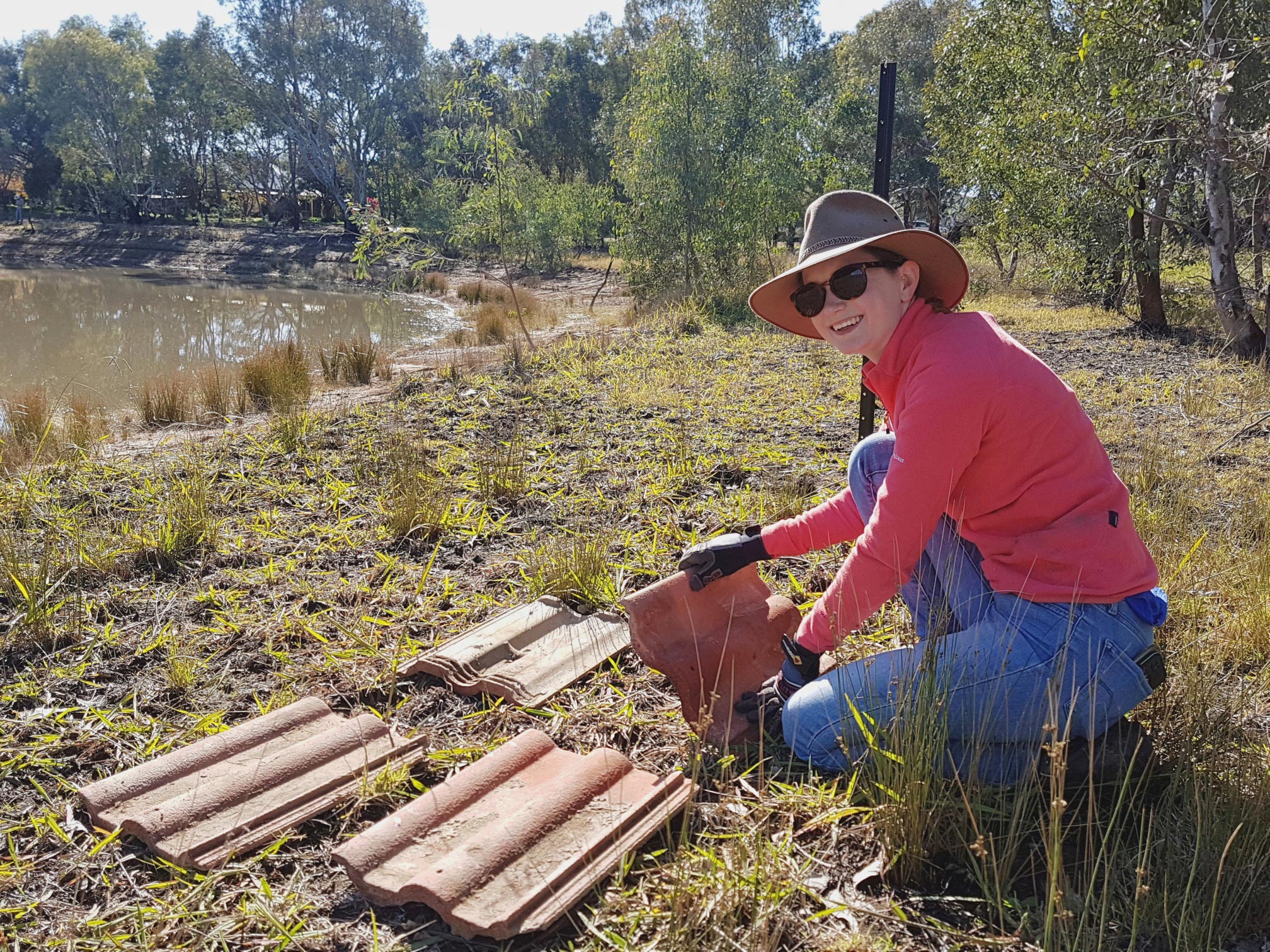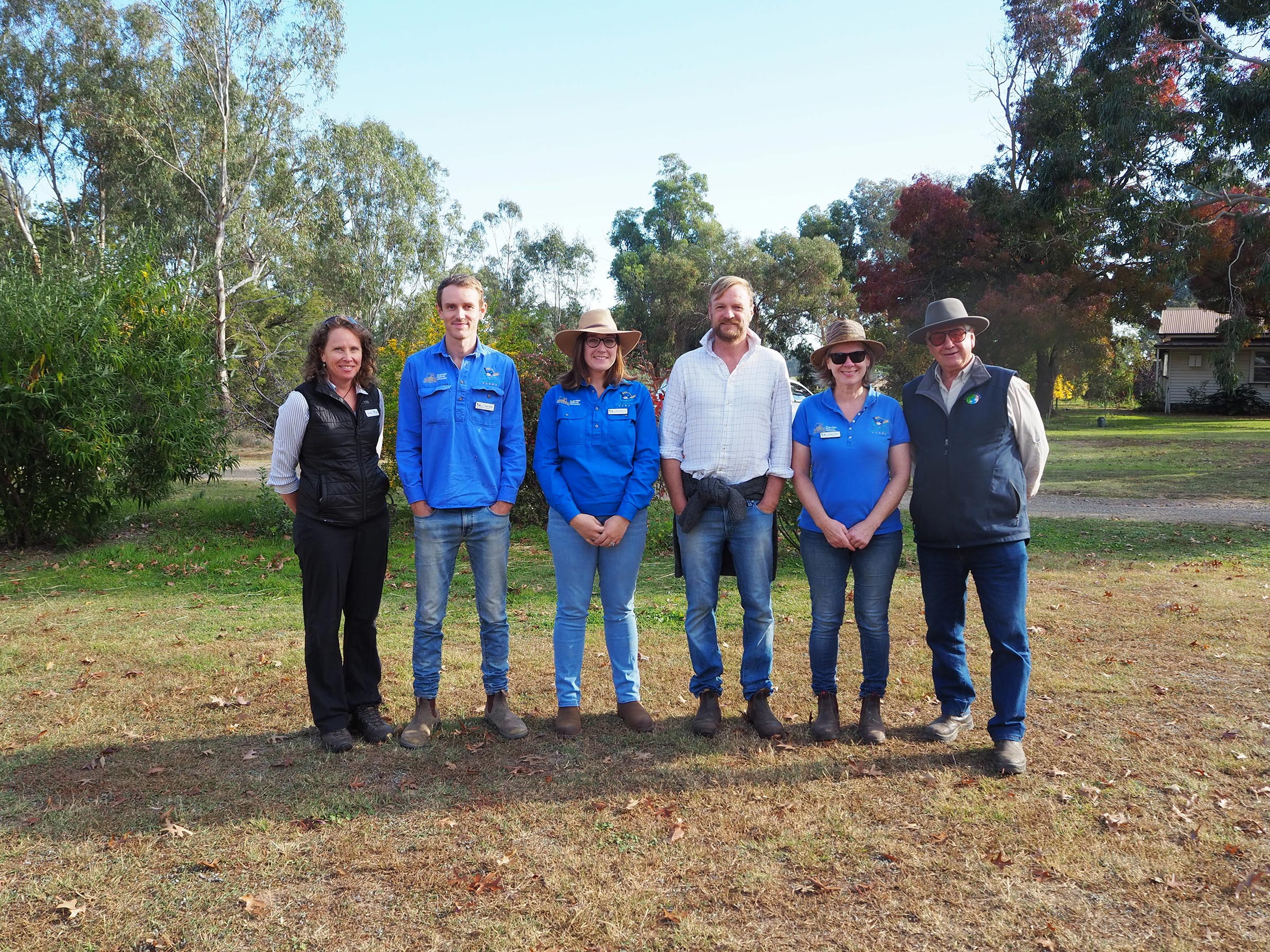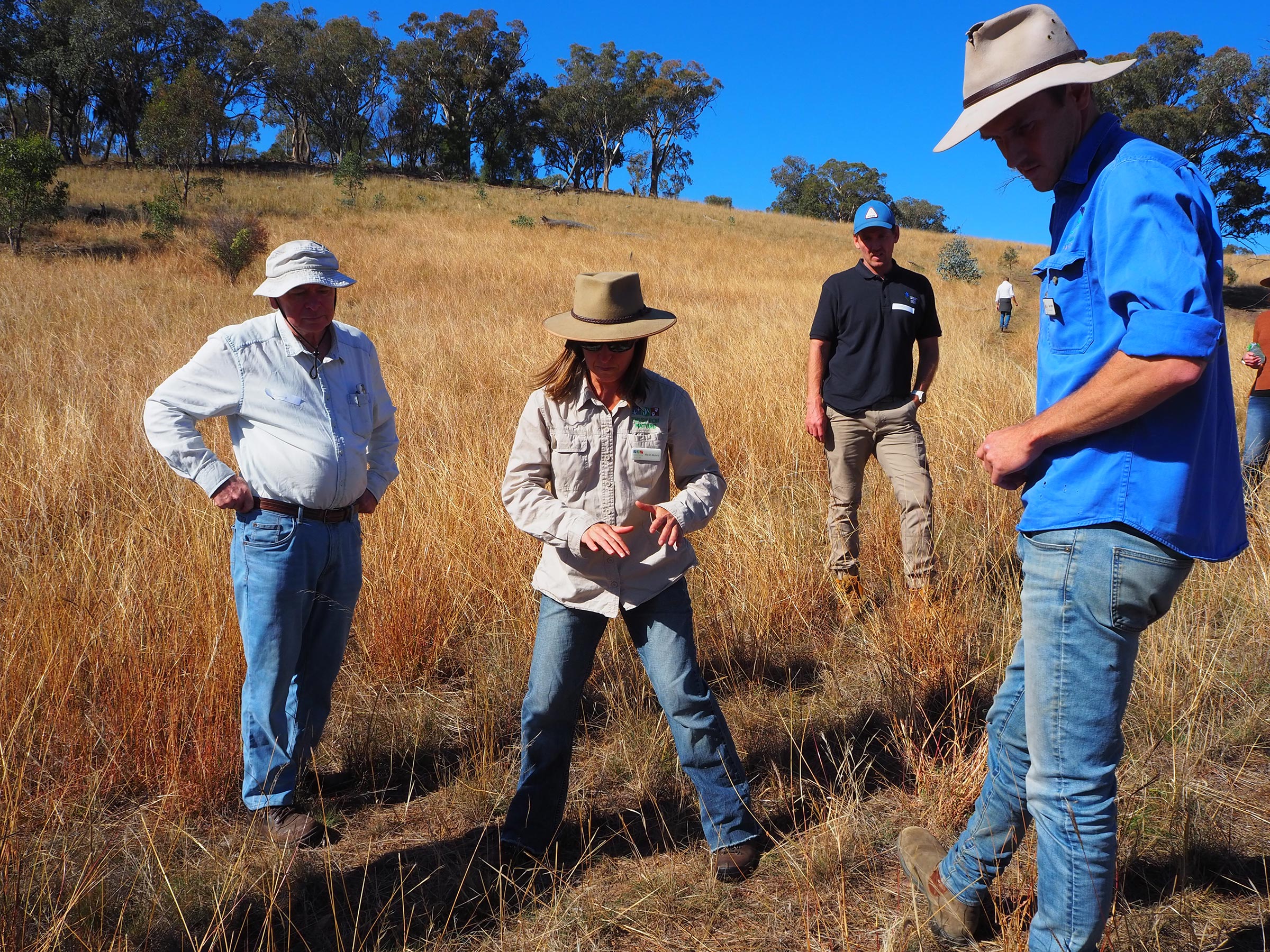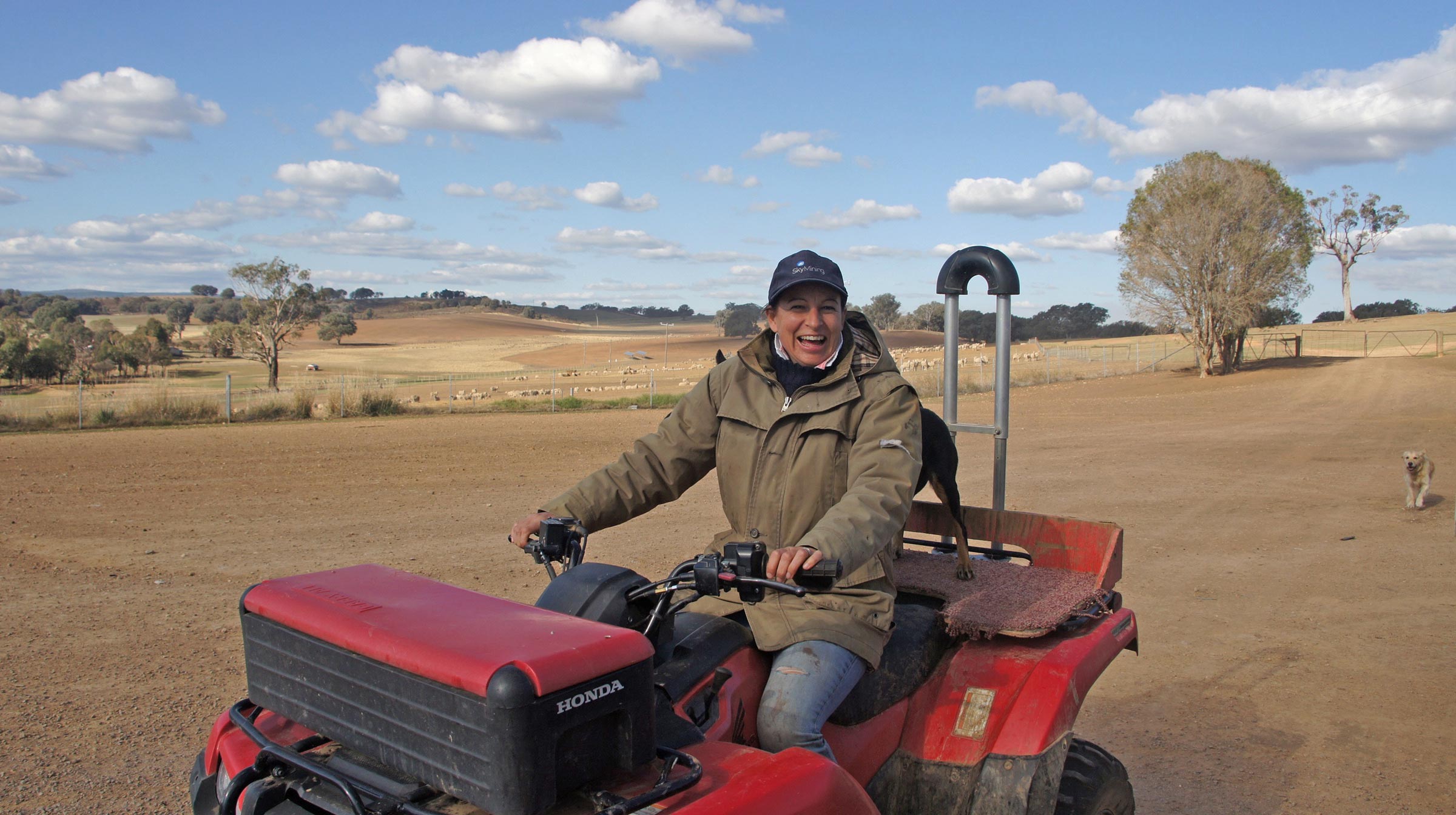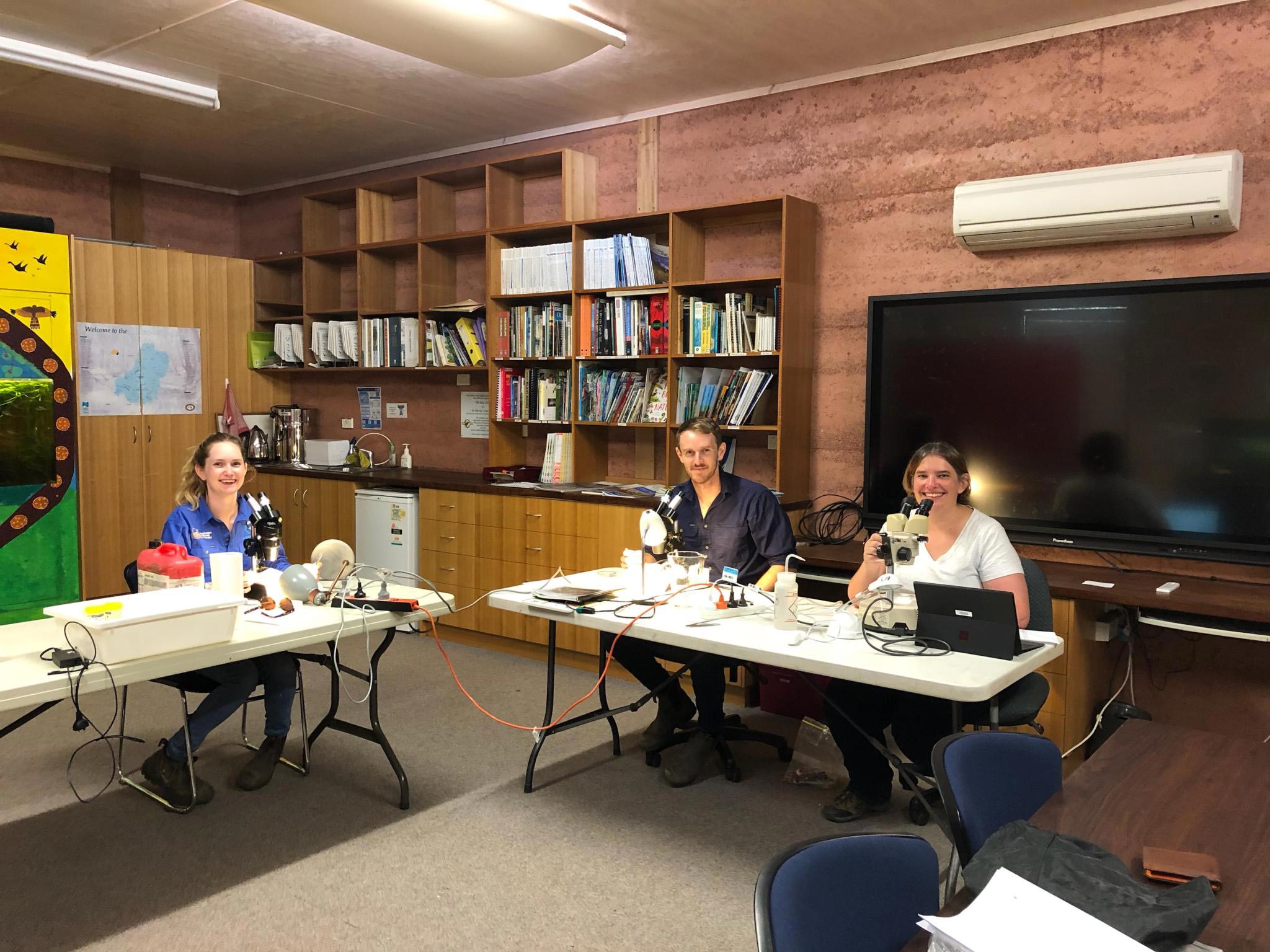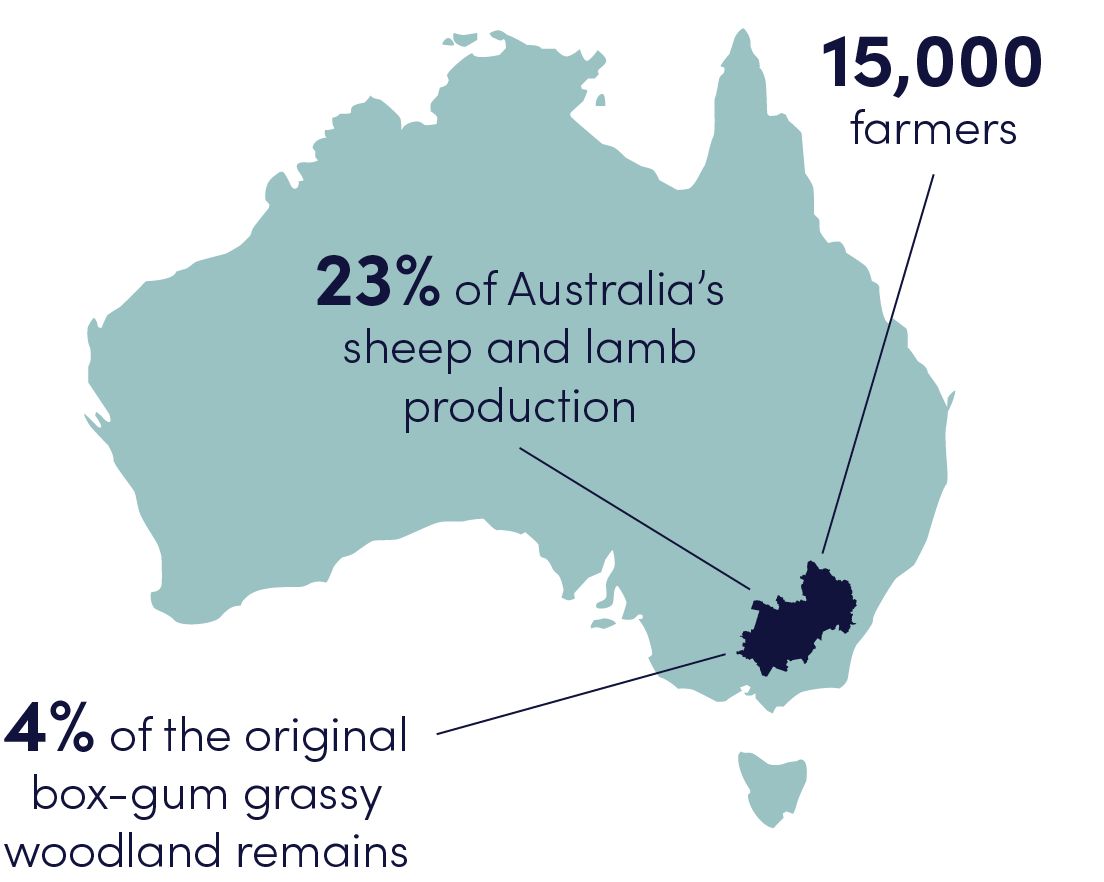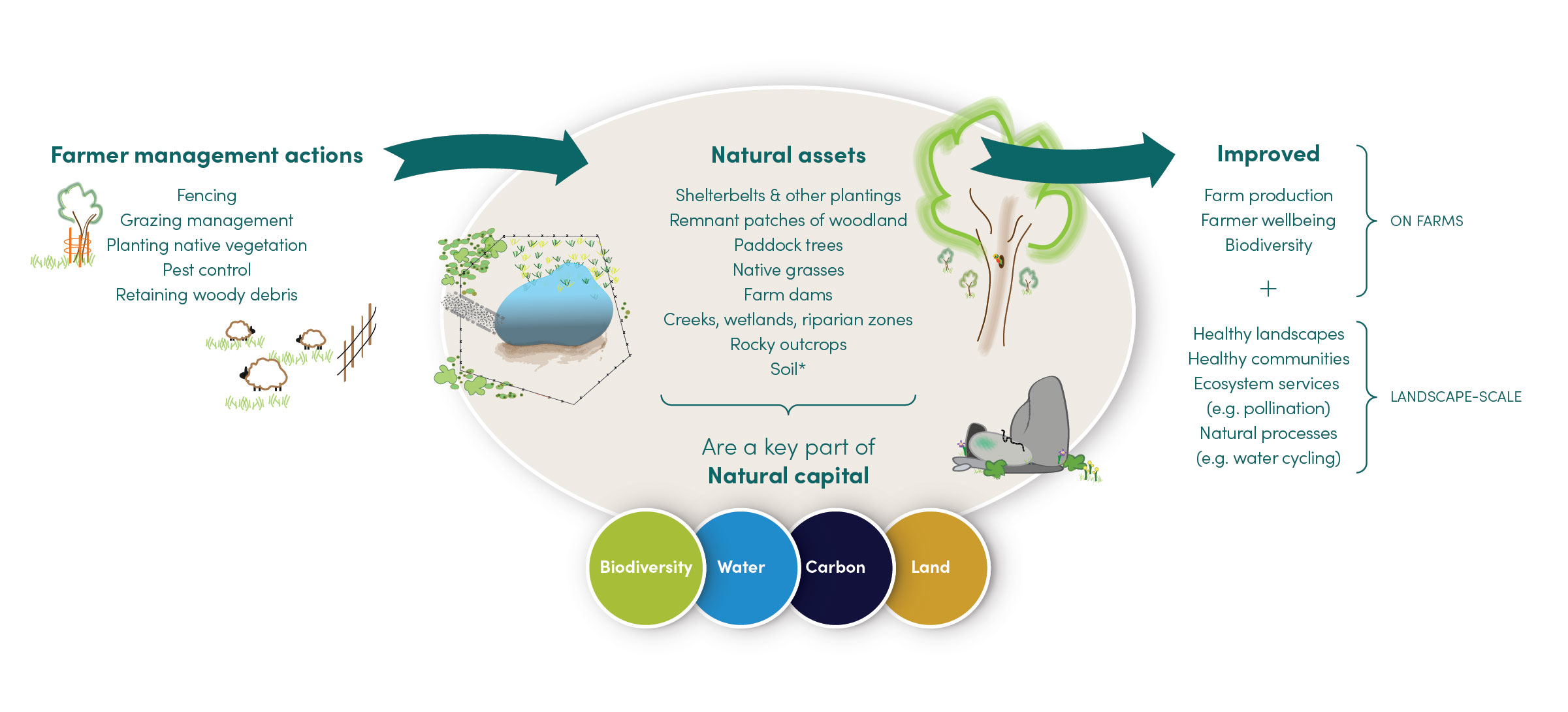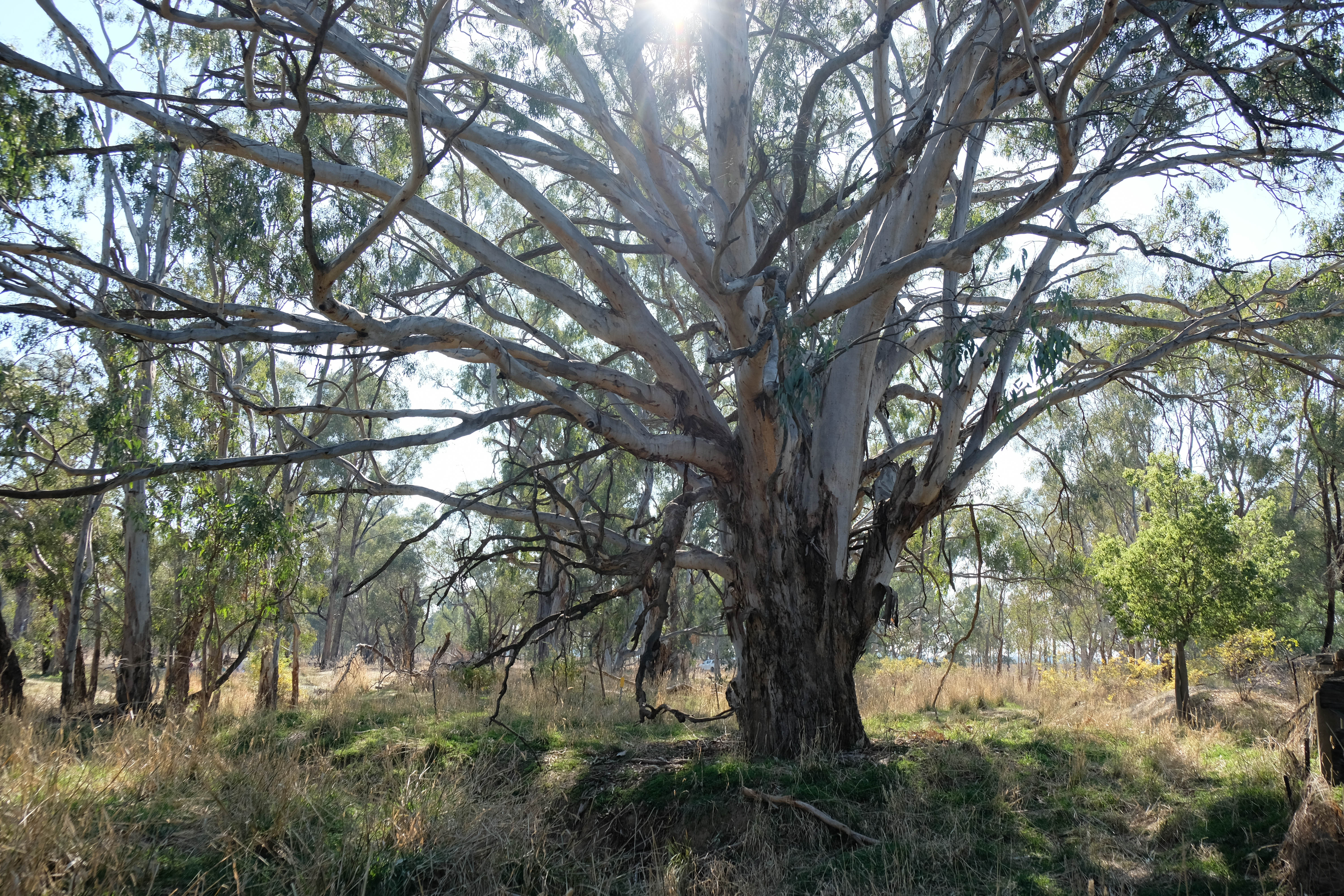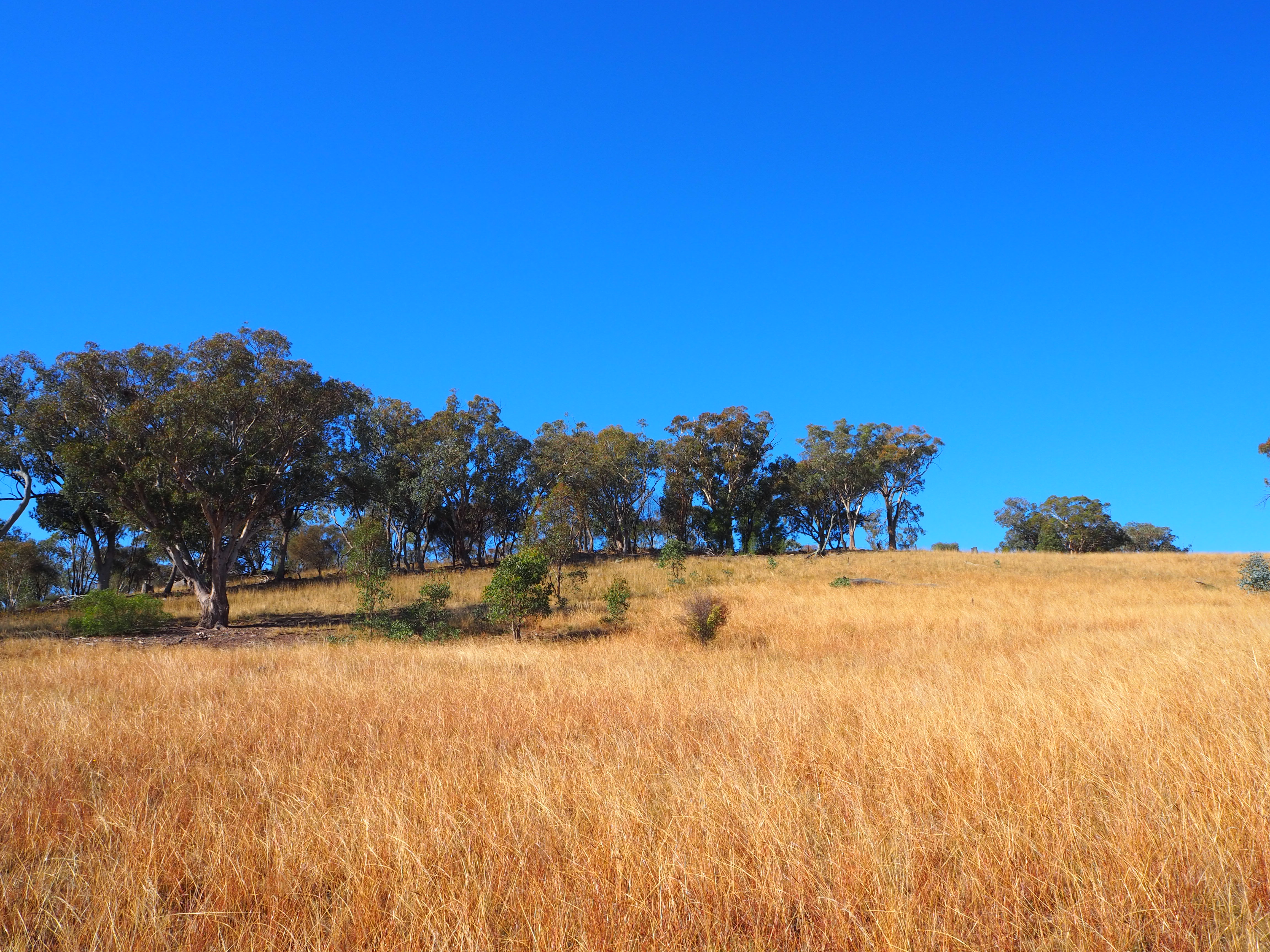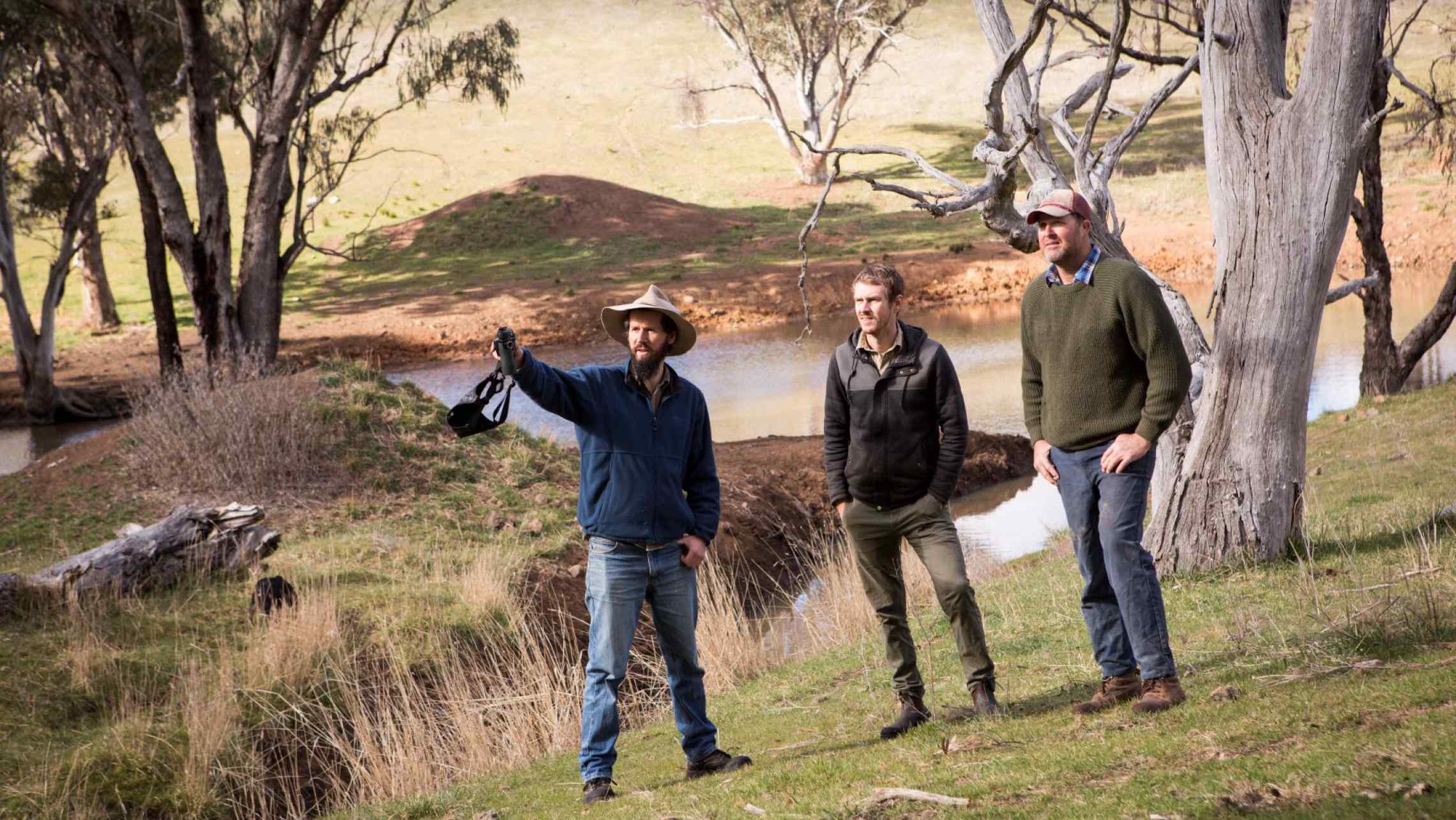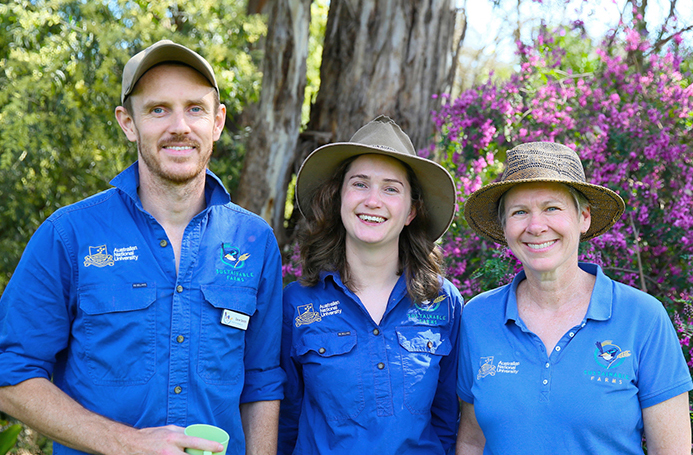Why Sustainable Farms?
Farm dams, creeks, remnant vegetation, native grasses and rocky outcrops are well-known features of farming landscapes. They are also valuable natural assets.
Our long-term ecology research on farms, supplemented by investigations into economics and mental health, shows that protecting and restoring natural assets on farms has multiple benefits.
Healthy natural assets support biodiversity and landscape function, which in turn underpin agricultural production.
From small, quick projects such as fencing a rocky outcrop, to longer-term investments such as planting a native shelterbelt, natural asset enhancements have something to offer for all farms and farming systems.
The Sustainable Farms project is locally embedded, working in the NSW South West Slopes, Central West, Murray-Riverina and North East Victoria.
Together with farmers, land managers, NRM agencies, industry groups and Landcare, we’re working towards a common goal: healthy farms, healthy farmers and healthy profits.


